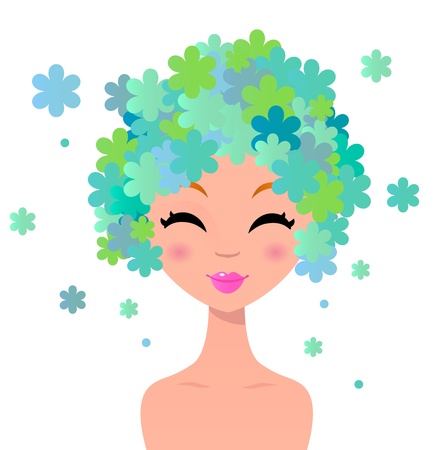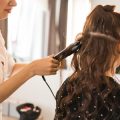Understanding the Risks: Dyed and Chemically Treated Hair
If you love experimenting with hair color or enjoy smoothing out your locks with a chemical treatment, you’re definitely not alone—these services are super popular in the U.S. But before you grab your favorite flat iron or curling wand, it’s important to know what’s really happening to your hair. When you dye or chemically treat your hair, it goes through a big transformation at a structural level. Coloring and treatments like perms or relaxers break down the natural bonds in your strands so the new color or texture can set in. While this means gorgeous results, it also makes your hair more vulnerable than untreated hair, especially when exposed to heat. The outer layer (cuticle) can get lifted or weakened, making it easier for moisture to escape and for damage to sneak in when you use hot tools. So, understanding these risks is step one in keeping your colored or processed hair healthy, shiny, and strong every time you style.
Choose the Right Tools for Delicate Hair
When you have dyed or chemically treated hair, picking the right styling tools makes a world of difference in protecting your locks from further damage. Not all hot tools are created equal—some are much gentler on fragile, color-treated hair than others. Here’s what to look for when shopping for your next hair tool:
Best Types of Styling Tools for Color-Treated Hair
| Tool Type | Why It’s Good for Treated Hair | Tips & Key Features |
|---|---|---|
| Ceramic Flat Irons | Even heat distribution prevents overheating and hot spots. | Look for adjustable temperature controls; use lower heat settings. |
| Titanium Curling Irons | Smooth surface reduces snagging and breakage. | Heats up quickly; choose ones with auto shut-off for extra safety. |
| Ionic Hair Dryers | Reduces frizz and drying time, keeping hair shiny and soft. | Select models with cool shot buttons and multiple speed settings. |
| Soft Bristle Brushes | Gentle detangling minimizes pulling on weakened strands. | Avoid metal bristles; opt for boar or nylon mix brushes. |
Key Features to Look For
- Adjustable Heat Settings: Always go for tools that let you control the temperature—lower temps are safer for processed hair.
- Ceramic or Tourmaline Plates/Barrels: These materials help distribute heat more evenly and lock in moisture.
- Ionic Technology: Cuts down on static and frizz, which is especially helpful for chemically treated hair that tends to get dry.
- Auto Shut-Off: Safety first! This feature is a lifesaver if you ever forget to turn off your straightener or curling iron.
- Lightweight Design: Easier to maneuver and less likely to tug at delicate hair as you style.
Pro Tip:
If you’re not sure where to start, check labels for “safe for color-treated hair” or “gentle styling” claims. Investing in the right tool now can save you a lot of regret (and split ends) later!
![]()
3. Setting Safe Heat Levels
When it comes to using hair tools on dyed or chemically treated hair, the right heat setting can make all the difference in keeping your hair healthy and vibrant. Chemically treated strands are more fragile than untreated hair, so a little extra care goes a long way.
Choose Lower Temperatures
If you’re reaching for your flat iron, curling wand, or blow dryer, always start with the lowest heat setting possible. Most experts recommend keeping tools at or below 300°F (about 150°C) for color-treated or processed hair. Many modern styling tools come with adjustable temperature settings—don’t be afraid to use them! High heat may seem tempting for quick styling, but it can strip away color and cause further damage.
Know Your Tool’s Settings
Take a minute to read your tool’s manual or check for the manufacturer’s website recommendations. Some brands even label their temperature dials as “fine,” “medium,” or “coarse.” For dyed or permed hair, stick with the “fine” or “low” options whenever possible.
Test Before You Style
Before diving in, do a quick strand test on a small section of your hair. This helps you see how your locks respond to the chosen heat level and lets you make adjustments before styling your whole head.
Use Heat in Short Bursts
No matter what tool you’re using, avoid lingering too long on any one spot. Glide irons and wands smoothly and keep the blow dryer moving. This reduces direct heat exposure and minimizes potential damage, helping your color last longer and your hair stay strong.
4. Prepping and Protecting: Must-Do Steps Before Styling
If you want to keep your dyed or chemically treated hair healthy, prepping before using any heat styling tool is a game changer. The right prep routine locks in moisture, reduces damage, and keeps your color vibrant for longer. Here’s how you can shield your strands like a pro:
Heat Protectants Are Non-Negotiable
Before you reach for that flat iron or curling wand, always apply a heat protectant. These products create a barrier between your hair and high temperatures, minimizing breakage and color fading. For best results, spray or distribute evenly on damp hair from roots to ends—don’t forget those fragile tips!
Hair Serums: Extra Love for Your Locks
Want even more protection? Layer on a nourishing serum after your heat protectant. Serums help seal the cuticle, add shine, and fight frizz (especially important if you’ve had chemical treatments). Just remember, a little goes a long way—use only a small amount to avoid weighing your hair down.
Prepping Products Comparison Table
| Product Type | Main Benefit | When to Apply | Best For |
|---|---|---|---|
| Heat Protectant Spray | Shields against heat damage | Before styling with hot tools, on damp or dry hair | All hair types, especially color-treated or chemically processed |
| Hair Serum | Adds shine & smoothness; seals cuticle | After heat protectant, before blow-drying or styling | Frizzy, dry, or heavily processed hair |
| Leave-In Conditioner | Moisturizes & detangles; reduces breakage | On towel-dried hair before other products | Brittle or over-processed hair needing extra TLC |
Why Prepping Matters So Much
The prep steps might seem like extra effort, but they make all the difference—especially in the American climate where humidity and hard water can take a toll on treated hair. Skipping them can lead to faded color, split ends, and that dreaded “fried” feeling. With just a few minutes and the right products, you’ll set yourself up for gorgeous, resilient hair every time you style.
5. Best Practices During Styling
Explore Gentle Techniques
When working with dyed or chemically treated hair, it’s essential to treat your strands with extra care. Always start by gently detangling your hair using a wide-tooth comb—this reduces breakage and prevents unnecessary pulling. When blow drying, use the lowest heat setting and keep the nozzle at least a few inches away from your hair. Instead of aggressively brushing or pulling, try patting and scrunching to encourage natural texture while minimizing stress on fragile hair.
Short Passes for Less Damage
A common mistake is holding hot tools on one section for too long. To protect color-treated or processed hair, use short, swift passes with your flat iron or curling wand. Don’t let the tool linger in one spot; instead, move steadily from roots to ends. This helps you achieve sleek, styled looks without frying your hair, which can cause color fading and increased dryness.
Master Sectioning Tricks
Sectioning your hair before styling isn’t just for pros—it’s a game changer for healthy hair! Divide your hair into small, manageable sections using clips or ties. This ensures even heat distribution and prevents you from going over the same piece repeatedly. Start with the bottom layers and work your way up, so every strand gets just enough attention without extra exposure to heat.
Pro Tip: Go Slow and Steady
Don’t rush the process! Taking your time means you’re less likely to miss spots and more likely to use gentle, controlled movements. Remember, your goal is to enjoy beautiful styles while keeping your dyed or chemically treated hair looking fresh and healthy.
6. Post-Styling TLC: Keeping Your Hair Healthy
After using hot tools on dyed or chemically treated hair, it’s super important to show your locks some extra love! Moisturizing treatments are your best friend—think deep conditioners, leave-in masks, or nourishing oils like argan or coconut. These products help restore moisture and prevent breakage caused by heat styling.
Smart Washing Routines
How you wash your hair matters just as much as how you style it. Try to avoid washing every day; two to three times a week is plenty for most people. This helps keep natural oils in your hair, which protect both your color and the integrity of your strands. When you do wash, go for sulfate-free shampoos and conditioners made specifically for color-treated hair.
Cool Down with Water Temperature
Hot water can strip away moisture and fade your color faster. Stick with lukewarm or cool water when rinsing out your products. It may take a little getting used to, but your hair will thank you!
Extra Tips for Vibrant, Healthy Hair
If you use heat tools regularly, consider applying a weekly protein treatment to strengthen your strands. Also, pat—don’t rub—your hair dry with a soft towel or old T-shirt to reduce friction and minimize frizz. And finally, whenever possible, let your hair air-dry instead of blasting it with more heat.
With a little post-styling TLC and these aftercare habits, your dyed and chemically treated hair can stay shiny, healthy, and vibrant between salon visits!


